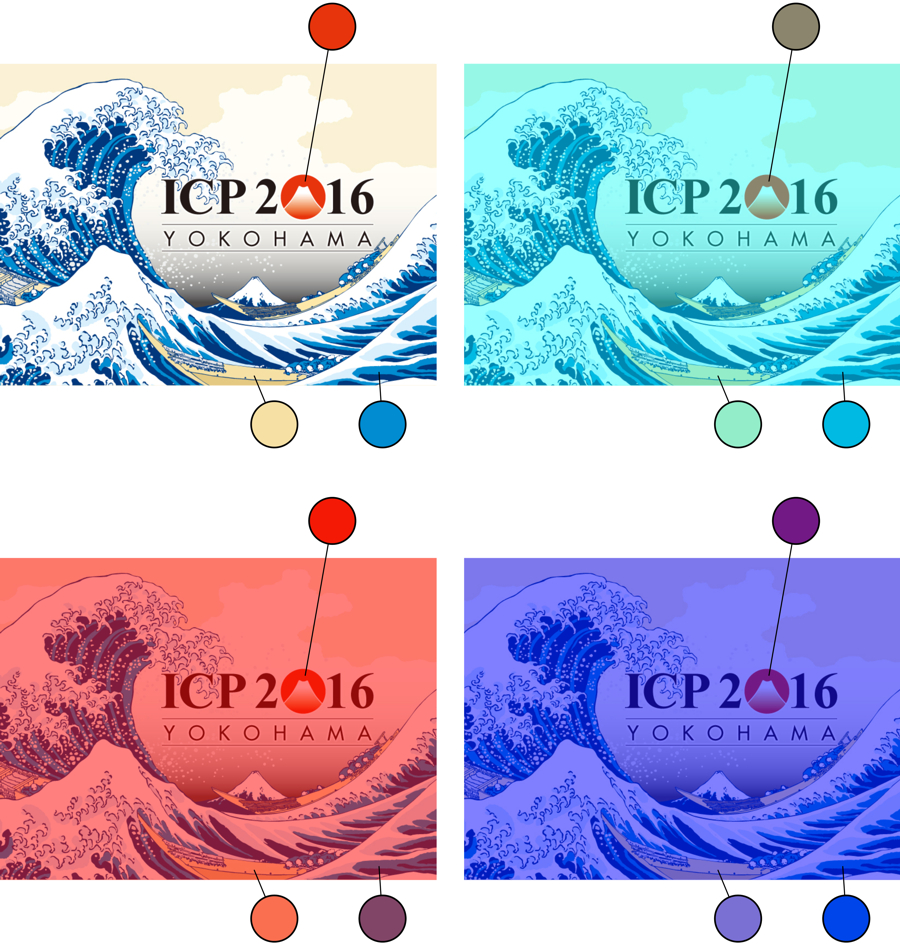
北岡のひとりごと 3
since June 19, 2025
ひとりごとというよりメモ帳
Roncato S, Guidi S, Parlangeli O, Battaglini L. Illusory Streaks from Corners and Their Perceptual Integration. Front Psychol. 2016 Jun 23;7:959. doi: https://doi.org/10.3389/fpsyg.2016.00959
Sinha P, Crucilla S, Gandhi T, Rose D, Singh A, Ganesh S, Mathur U, & Bex P. (2020). Mechanisms underlying simultaneous brightness contrast: Early and innate. Vision Research, 173,41-49. https://10.1016/j.visres.2020.04.012
Ganel, T., & Goodale, M. A. (2003). Visual control of action but not perception requires analytical processing of object shape. Nature, 426(6967): 664-667. https://doi.org/10.1038/nature02156
Beck, D.M., Emanuele, B., & Savazzi, S. (2013). A new illusion of height and width: taller people are perceived as thinner. Psychonomic Bulletin & Review, 20, 1154–1160. https://doi.org/10.3758/s13423-013-0454-8
Daumail, L., Blake, R. & Tong, F. A reevaluation of the visual phantom illusion and its impact on the motion aftereffect. Sci Rep 15, 36358 (2025). https://doi.org/10.1038/s41598-025-20213-4
O.R. Kirubeswaran, Katherine R. Storrs,
Inconsistent illusory motion in predictive coding deep neural networks,
Vision Research,
Volume 206,
2023,
108195,
ISSN 0042-6989,
https://doi.org/10.1016/j.visres.2023.108195
Chi, M.-T., Lee, T.-Y., Qu, Y. and Wong, T. (2008) Self-Animating Images: Illusory Motion Using Repeated Asymmetric Patterns. ACM Transactions on Graphics (TOG), Vol. 3 No. 27, pp. 1–8, doi: https://doi.org/10.1145/1360612.1360661
Gladilin, E. and Eils, R. (2015) ‘On the role of spatial phase and phase correlation in vision, illusion, and cognition’, Frontiers in Computational Neuroscience, 9, 45. https://doi.org/10.3389/fncom.2015.00045
Gooch, A.A., Olsen, S.C., Tumblin, J. and Gooch, B. (2005) Color2Gray: Saliencepreserving color removal. ACM Transactions on Graphics, Vol. 24 No. 3, pp. 634–639, doi:10.1145/1073204.1073241.
Pinna B (2015) Directional organization and shape formation: new illusions and Helmholtz's Square. Front. Hum. Neurosci. 9:92. doi: 10.3389/fnhum.2015.00092
Zanker JM, Hermens F, Walker R. Quantifying and modeling the strength of motion illusions perceived in static patterns. J Vis. 2010 Feb 16;10(2):13.1-14. doi: 10.1167/10.2.13.
Wertheimer, M. (1912). Experimentelle Studien über das Sehen von Bewegung. Zeitschrift für Psychologie, 61, 161-265.
Dimmick, F. L. (1920). An Experimental Study of Visual Movement and the Phi Phenomenon. The American Journal of Psychology, 31, 317–332. https://doi.org/10.2307/1413667
Guilford, J. P., & Helson, H. (1929). Eye-movements and the phi-phenomenon. The American Journal of Psychology, 41, 595–606. https://doi.org/10.2307/1414716
Vogt, H. G., & Grant, W. (1927). A Study of the Phenomenon of Apparent Movement. The American Journal of Psychology, 38(1), 130–133. https://doi.org/10.2307/1414654
「AIも惑う、脳の勘違い「錯視」…特性生かした商品開発も」(読売)
https://news.yahoo.co.jp/articles/a05853f238d11a85d29feb1902e7b69d5ca5daa3?page=1
日経
https://www.nikkei.com/article/DGXZQOUD131WX0T11C25A0000000/
錯視の研究は、視覚を実験心理学的に研究する領域の一つとして発展してきた。錯視の「錯」には「まじる」などの意味があるが、ここでは「まちがえる」という意味で使われている。英語では錯視は "visual illusion" で、"illusion" は「対象の真の性質(と認識されたもの)とは異なるその対象の知覚」すなわち錯覚のことである。そうはいうものの、錯視は病的なものではなく健常なものである。錯視は「間違った」視覚と表現されていても、視覚としては正常に働いた結果、たまたま対象の性質と知覚が一致しなかった場合に、錯視というラベルが貼られているだけである。もっとも、対象の性質と知覚が一致しない現象なら何でも錯視と呼ばれるかというとそうではなく、おもしろいもの、不思議なもの、美しいものが錯視と呼ばれる傾向にある。すなわち、錯視は芸術と関係がある可能性がある。この関係性は、今後の錯視研究のテーマの一つになるかもしれない。
<November 5, 2025>
Cavanagh P. Using Illusions to Track the Emergence of Visual Perception. Annu Rev Vis Sci. 2024 Sep;10(1):1-22. https://doi.org/10.1146/annurev-vision-103023-012730. Epub 2024 Sep 19. PMID: 38871345.
Gori, S., & Stubbs, D. A. (2006). A New Set of Illusions—the Dynamic Luminance-Gradient Illusion and the Breathing Light Illusion. Perception, 35(11), 1573-1577. https://doi.org/10.1068/p5668 (Original work published 2006)
Oliva, A., & Torralba, A. (2006). Building the gist of a scene: The role of global image features in recognition. Progress in Brain Research, 155, 23–36.
谷中先生の2015年の色依存のFW錯視のポスター
https://f1000research.com/posters/4-676
Shapiro, A. G., Kobayashi, Y., & DeNavas, J. (2025). Two new visual phenomena inconsistent with an illumination assumption in two-dimensional images. Journal of the Optical Society of America. A, 42(5), B460–B466.
Wallach, H., & O'Connell, D. N. (1953). The kinetic depth effect. Journal of Experimental Psychology, 45(4), 205–217. https://doi.org/10.1037/h0056880
Sumi, S. (1989). Kinetic contours in rotating objects. Perception, 18(3), 293-302. https://doi.org/10.1068/p180293
Zanforlin, M. (1988). The height of a stereokinetic cone: a quantitative
determination of a 3-D effect from 2-D moving patterns without a "rigidity
assumption." Psvchological Research, 50, 162-172.
https://doi.org/10.1007/BF00310177
Nakamizo, S., & Kondo, M. (2009). Depth perception of stereokinetic
cone and absolute distance information. Japanese Psychological Research, 1995,
37(3), 139-145.
Released on J-STAGE February 24, 2009, Online ISSN 1468-5884, Print ISSN 0021-5368
https://doi.org/10.4992/psycholres1954.37.139
https://www.jstage.jst.go.jp/article/psycholres1954/37/3/37_3_139/_article/-char/en
Abstract: Magnitudes of the apparent depth of eccentric circles and real
cone stimuli were measured as a function of viewing distance when they
were rotated on a circular disc and viewed monocularly. The diameters of
the largest circle and base of the cone were 5, 10, 20, and 40 cm at the
viewing distances, 0.5, 1, 2, and 4 m, respectively. The height of each
cone was equal to the diameter of its base. The cones were tilted 15 deg
from the fronto-parallel plane so that their retinal images approximated
to those of the eccentric circles stimuli. Eight observers produced the
magnitude of depth of the perceived stimuli at each of the four viewing
distances. The mean magnitude of the apparent depth for the eccentric circles
stimulus increased linearly as a function of the viewing distance. The
height of the cone stimulus was perceived veridically. The results of the
experiment are consistent with the motion parallax hypothesis which states
that the visual system calibrates motion parallax according to absolute
distance information in processing stereokinetic depth.
Ömer Dağlar Tanrıkulu, Vicky Froyen, Jacob Feldman, Manish Singh; Geometric figure–ground cues override standard depth from accretion-deletion. Journal of Vision 2016;16(5):15. https://doi.org/10.1167/16.5.15
Gerbino, W. (2020). Amodal Completion Revisited. I-Perception, 11(4). https://doi.org/10.1177/2041669520937323
https://journals.sagepub.com/doi/10.1177/2041669520937323
https://pmc.ncbi.nlm.nih.gov/articles/PMC7466902/
Gomez-Villa, A., Wang, K., Parraga, C. A., Twardowski, B., Malo, J., Vazquez-Corral, J., & van den Weijer, J. (2025). The Art of Deception: Color Visual Illusions and Diffusion Models. In Proceedings of the Computer Vision and Pattern Recognition Conference (pp. 18642-18652). Web site
